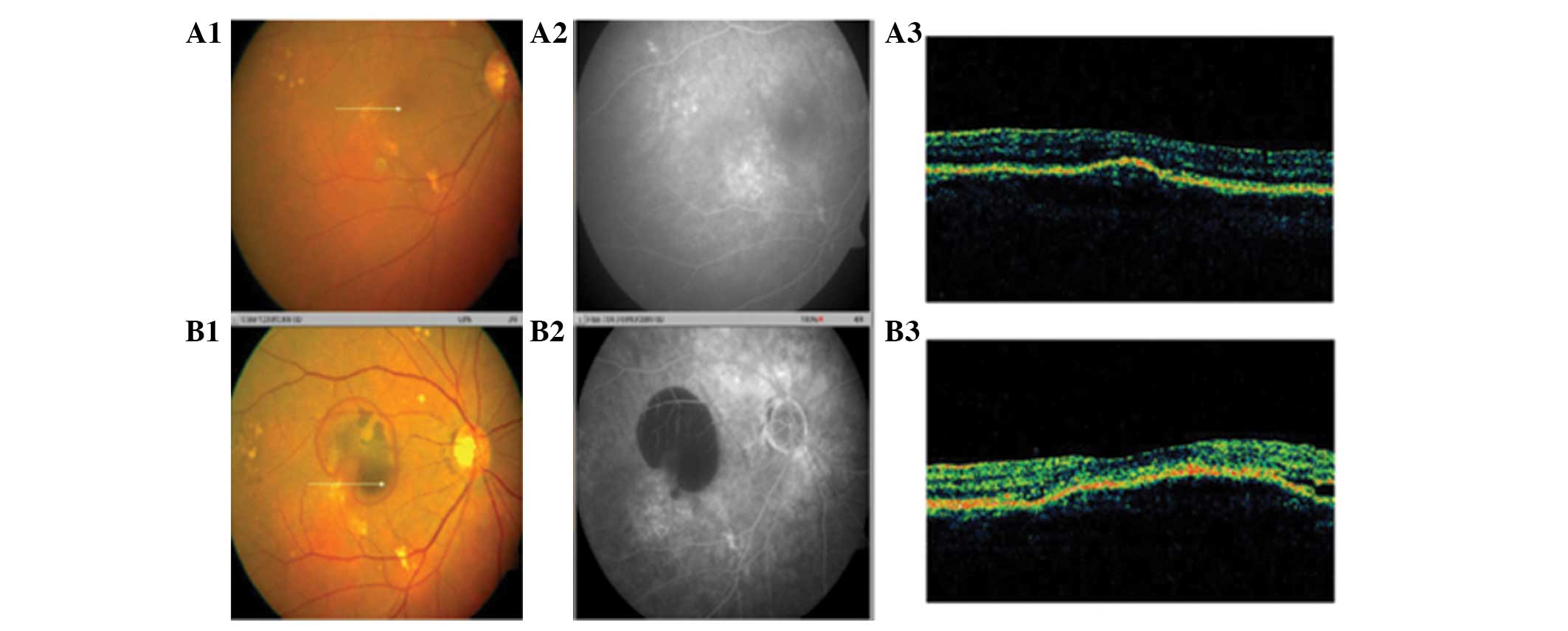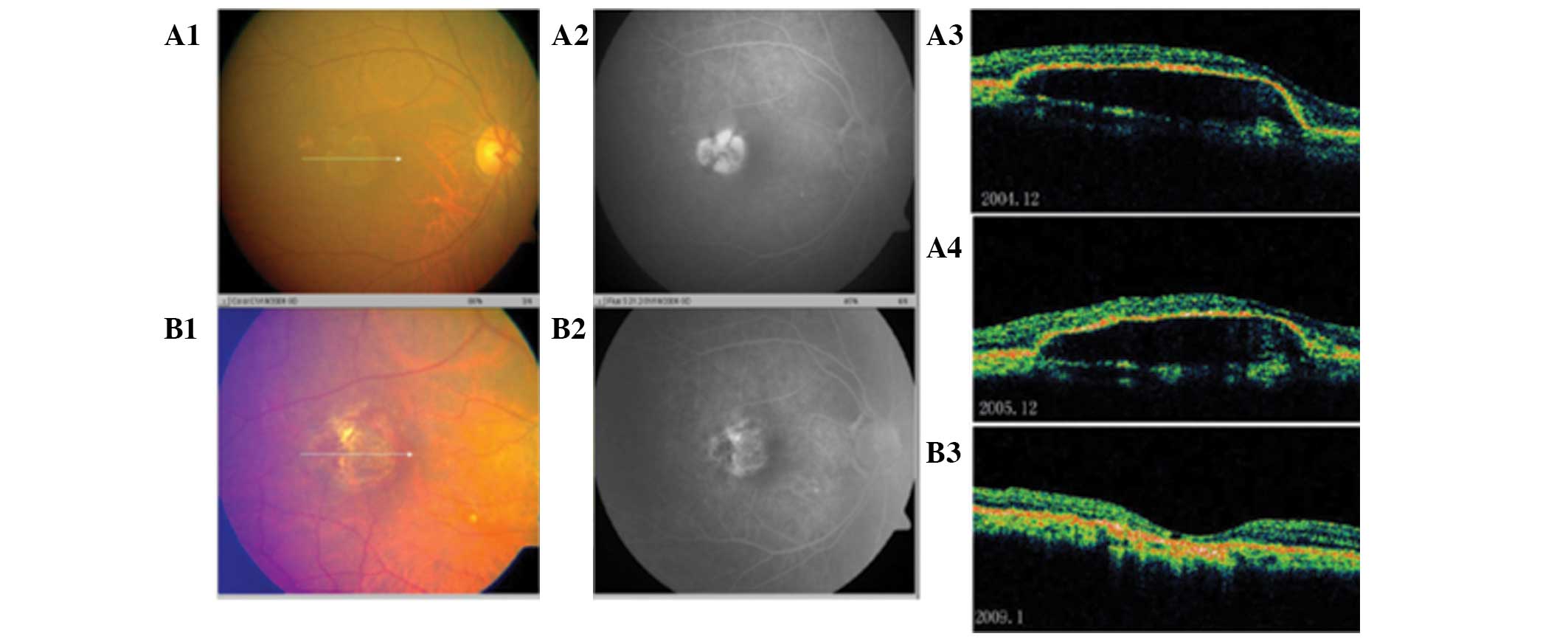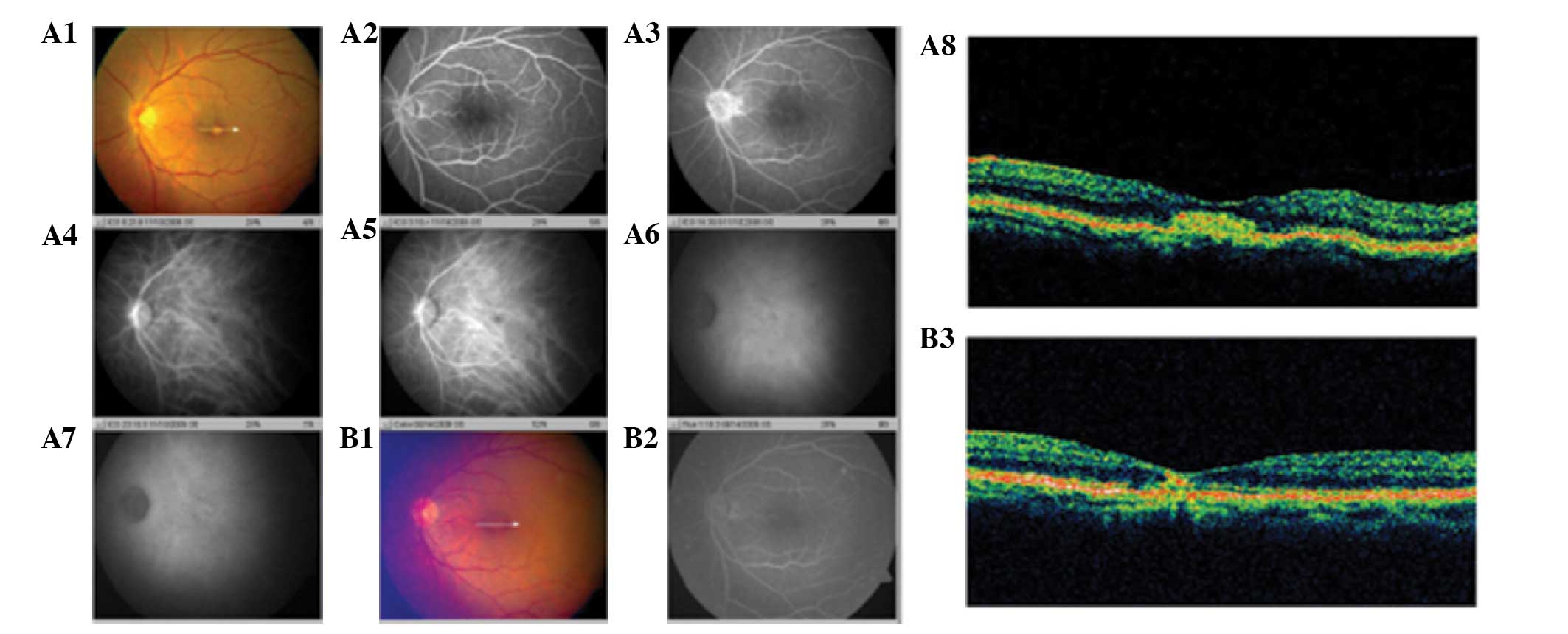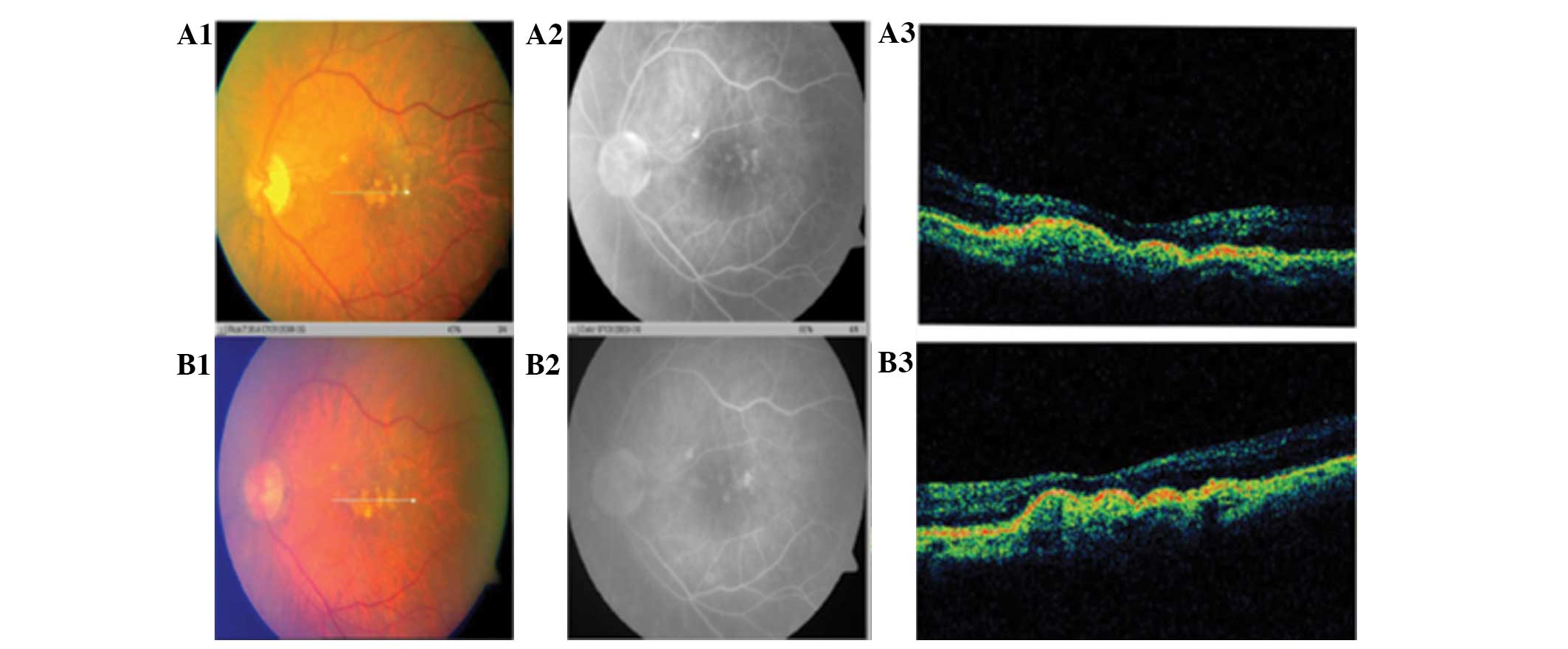|
1
|
Stevens GA, White RA, Flaxman SR, et al;
Vision Loss Expert Group. Global prevalence of vision impairment
and blindness: magnitude and temporal trends, 1990–2010.
Ophthalmology. 120:2377–2384. 2013.
|
|
2
|
de Jong PT: Age-related macular
degeneration. N Engl J Med. 355:1474–1485. 2006.
|
|
3
|
Zou H, Zhang X, Xu X and He Z:
Epidemiology survey of rhegmatogenous retinal detachment in Beijing
districts, Shanghai. Zhonghua Yan Ke Za Zhi. 38:580–583. 2002.(In
Chinese).
|
|
4
|
Klein R, Klein BE, Tomany SC, Meuer SM and
Huang GH: Ten-year incidence and progression of age-related
maculopathy: The Beaver Dam eye study. Ophthalmology.
109:1767–1779. 2002.
|
|
5
|
Friedman DS, O’Colmain BJ, Muñoz B, et al;
Eye Diseases Prevalence Research Group. Prevalence of age-related
macular degeneration in the United States. Arch Ophthalmol.
122:564–572. 2004. View Article : Google Scholar : PubMed/NCBI
|
|
6
|
Seddon JM, Ajani UA, Sperduto RD, et al:
Dietary carotenoids, vitamins A, C, and E, and advanced age-related
macular degeneration. Eye Disease Case-Control Study Group. JAMA.
272:1413–1420. 1994. View Article : Google Scholar : PubMed/NCBI
|
|
7
|
Tan JS, Wang JJ, Flood V, Rochtchina E,
Smith W and Mitchell P: Dietary antioxidants and the long-term
incidence of age-related macular degeneration: the Blue Mountains
Eye Study. Ophthalmology. 115:334–341. 2008. View Article : Google Scholar : PubMed/NCBI
|
|
8
|
Ferris FL, Davis MD, Clemons TE, et al;
Age-related Eye Disease Study (AREDS) Research Group. A simplified
severity scale for age-related macular degeneration: AREDS Report
No 18. Arch Ophthalmol. 123:1570–1574. 2005. View Article : Google Scholar : PubMed/NCBI
|
|
9
|
Fung AE, Lalwani GA, Rosenfeld PJ, et al:
An optical coherence tomography-guided, variable dosing regimen
with intravitreal ranibizumab (Lucentis) for neovascular
age-related macular degeneration. Am J Ophthalmol. 143:566–583.
2007. View Article : Google Scholar
|
|
10
|
Lalwani GA, Rosenfeld PJ, Fung AE, et al:
A variable-dosing regimen with intravitreal ranibizumab for
neovascular age-related macular degeneration: year 2 of the PrONTO
Study. Am J Ophthalmol. 148:43–58. 2009.PubMed/NCBI
|
|
11
|
Funk M, Karl D, Georgopoulos M, et al:
Neovascular age-related macular degeneration: intraocular cytokines
and growth factors and the influence of therapy with ranibizumab.
Ophthalmology. 116:2393–2399. 2009. View Article : Google Scholar : PubMed/NCBI
|
|
12
|
Gass JD: Biomicroscopic and
histopathologic considerations regarding the feasibility of
surgical excision of subfoveal neovascular membranes. Am J
Ophthalmol. 118:285–298. 1994. View Article : Google Scholar
|
|
13
|
Petrarca R, Dugel PU, Nau J, Slakter JS,
Jaffe GJ and Jackson TL: Macular epiretinal brachytherapy in
treated age-related macular degeneration (MERITAGE): Month 12
optical coherence tomography and fluorescein angiography.
Ophthalmology. 120:328–333. 2013. View Article : Google Scholar
|
|
14
|
Souied EH, Delcourt C, Querques G, et al:
Oral docosahexaenoic acid in the prevention of exudative
age-related macular degeneration: the Nutritional AMD Treatment 2
study. Ophthalmology. 120:1619–1631. 2013. View Article : Google Scholar : PubMed/NCBI
|
|
15
|
Morrison MA, Silveira AC, Huynh N, et al:
Systems biology-based analysis implicates a novel role for vitamin
D metabolism in the pathogenesis of age-related macular
degeneration. Hum Genomics. 5:538–568. 2011. View Article : Google Scholar : PubMed/NCBI
|
|
16
|
Paunescu LA, Schuman JS, Price LL, et al:
Reproducibility of nerve fiber thickness, macular thickness, and
optic nerve head measurements using StratusOCT. Invest Ophthalmol
Vis Sci. 45:1716–1724. 2004. View Article : Google Scholar : PubMed/NCBI
|
|
17
|
Hess DB, Asrani SG, Bhide MG, Enyedi LB,
Stinnett SS and Freedman SF: Macular and retinal nerve fiber layer
analysis of normal and glaucomatous eyes in children using optical
coherence tomography. Am J Ophthalmol. 139:509–517. 2005.
View Article : Google Scholar : PubMed/NCBI
|
|
18
|
Medeiros FA, Zangwill LM, Bowd C and
Weinreb RN: Comparison of the GDx VCC scanning laser polarimeter,
HRT II confocal scanning laser ophthalmoscope, and stratus OCT
optical coherence tomograph for the detection of glaucoma. Arch
Ophthalmol. 122:827–837. 2004. View Article : Google Scholar : PubMed/NCBI
|


















